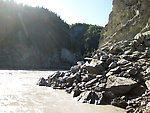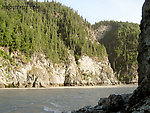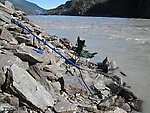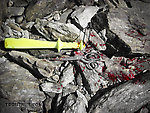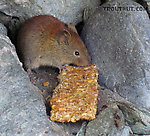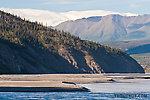Blog & Latest Updates
Fly Fishing Articles
Insects by Common Name


Latest updates, page 50
Updates from September 9, 2011
Closeup insects by Bnewell from the Touchet River in Washington
Female Limnephilus frijole (Summer Flier Sedge) Caddisfly Adult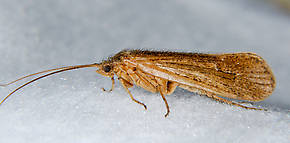 View 1 Pictures
View 1 Pictures
 View 1 Pictures
View 1 PicturesCollected September 9, 2011 from the Touchet River in Washington
Added to Troutnut.com by Bnewell on September 14, 2011
Added to Troutnut.com by Bnewell on September 14, 2011
Updates from September 5, 2011
Closeup insects by Bnewell from the Touchet River in Washington
Female Hesperophylax designatus (Silver Striped Sedge) Caddisfly Adult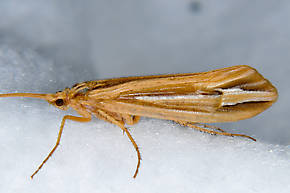 View 1 Pictures
View 1 Pictures
 View 1 Pictures
View 1 PicturesCollected September 5, 2011 from the Touchet River in Washington
Added to Troutnut.com by Bnewell on September 14, 2011
Added to Troutnut.com by Bnewell on September 14, 2011
A couple nighttime pictures of the Gulkana River
I left Chitina around 8pm after 12 hours dipnetting and 2 hours cleaning fish, then drove north toward home for 4 hours before stopping to "car camp" at the same Gulkana River access I photographed on my trip down. First, I took a few minutes to work on my nighttime river photography under the full moon.
Photos by Troutnut from the Gulkana River in Alaska
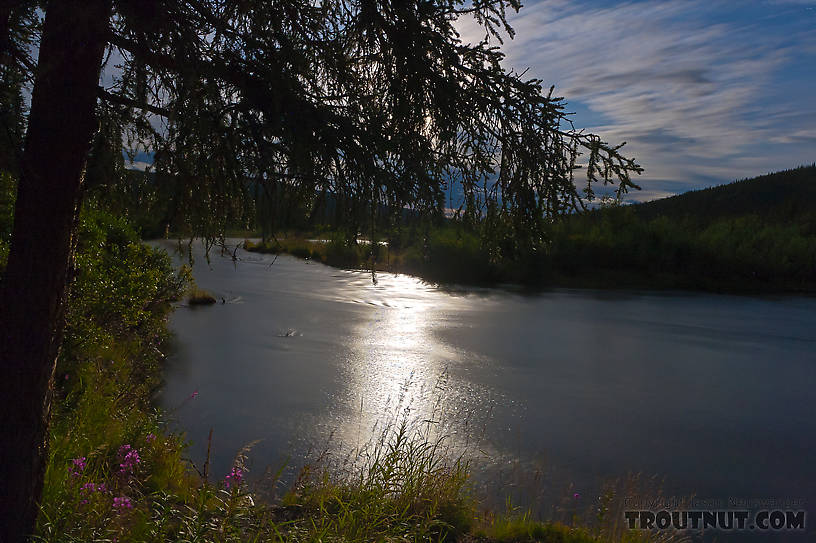
A moonbeam illuminates a riffle and some fireweed.
StateAlaska
LocationGulkana River
Date TakenAug 13, 2011
Date AddedAug 15, 2011
AuthorTroutnut
CameraCanon EOS 20D
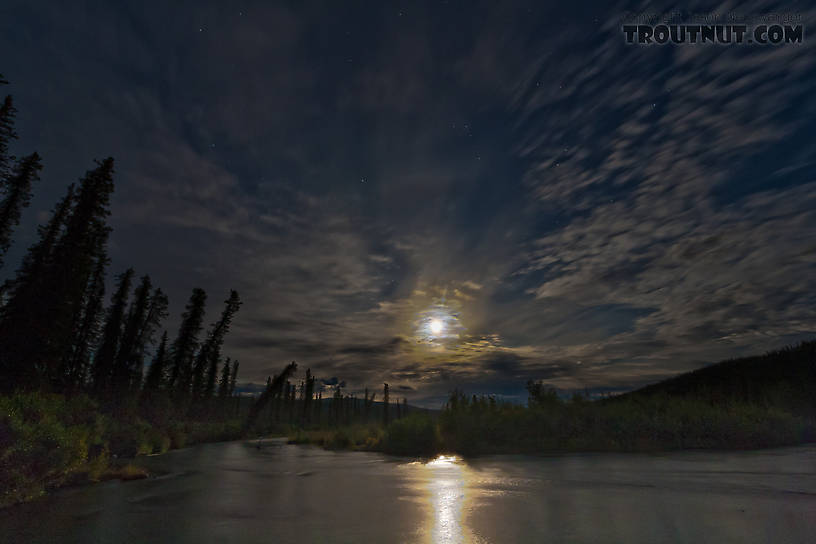
The upper Gulkana, moonlit shortly after midnight.
StateAlaska
LocationGulkana River
Date TakenAug 13, 2011
Date AddedAug 15, 2011
AuthorTroutnut
CameraCanon EOS 20D
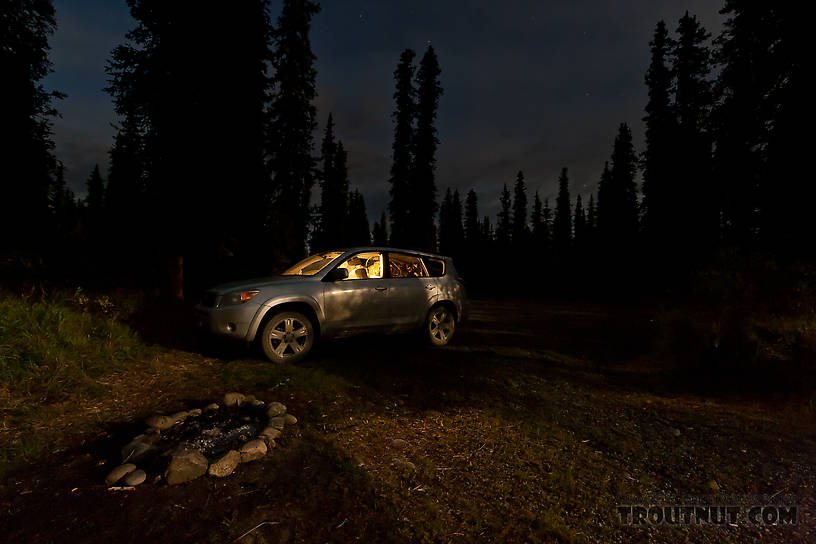
Home sweet home... the back of the car is half sleeping bag, half salmon on ice.
StateAlaska
LocationGulkana River
Date TakenAug 13, 2011
Date AddedAug 16, 2011
AuthorTroutnut
CameraCanon EOS 20D
Dipnetting for sockeye salmon in the Copper River at Chitina, Alaska
One of the perks of being an Alaska resident is that we can partake in several "personal use" fisheries that allow dip-netting for salmon. With harvest limits of up to 40 fish, they make it possible to have salmon as a staple of our diets, which we could never do by sport angling because of the 3-fish possession limit and the 10-hour round trip drive required to reach a decent salmon stream from Fairbanks. The crown jewel of Alaska's dipnetting sites is the sockeye salmon fishery at in the Copper River at Chitina. The salmon passing through here are very possibly the best-tasting fish in the world. Fed on plankton in the clean waters of Prince William Sound and the Gulf of Alaska, they stockpile unusually large amounts of tasty, healthy fatty acids in their firm, red flesh. The longer a salmon has to travel to reach its spawning grounds, the more fat it stores, so the tastiest salmon are those caught near the beginning of a journey up a very long river like the Copper or the Yukon.
Although "sporting" is the wrong word for dip-netting, it's much more challenging than most would expect. When I first heard about it, I pictured relaxed Alaskans standing on the bank of a clear, mid-sized river, nets laying on the ground as they watch and wait for salmon to appear. I had not imagined the thundering slurry of powdered mountain that is the Copper River at Chitina, a river the size of the Missouri squeezing through a bedrock canyon 100 meters wide. Most of the water is glacial melt, no clearer than chocolate milk, so densely is it loaded with the dust of the Alaska Range and the Wrangell Mountains. There's no outward sign of the thousands--sometimes tens of thousands--of salmon that pass through every day of the summer, inches below the opaque surface. The dip-netter perches on a narrow shelf of jagged rocks, holding a large net in the river continuously, fighting the force of the silt-laden current from the other end of a 15-foot metal pole. The telltale bump of a salmon in the net may come every few minutes, or hours apart, and I have spent (Spent: The wing position of many aquatic insects when they fall on the water after mating. The wings of both sides lay flat on the water. The word may be used to describe insects with their wings in that position, as well as the position itself.) about 12 hours on the net each year to obtain my limit. It's hard work to fill the freezer with this world-class delicacy.
Catch & release purists need not cringe at the sight of these photos: the Copper River sockeye salmon fishery is a sustainably managed, hatchery-supplemented fishery with limits and closures adjusted several times throughout the season by the Alaska Department of Fish & Game. The run each year contains more than enough salmon to replenish the population, especially with the hatchery's help, and the excess is split among commercial fishermen in Prince William Sound, native subsistence users who can each catch hundreds of salmon in their fish wheels, dip-netters in the "personal use" fishery, and a comparatively tiny harvest by sport anglers in clearer tributaries, mostly the Gulkana and Klutina rivers. Many of the fish we dipnet in the main stem Copper are destined for off-road tributaries that rarely see an angler, especially not a salmon angler. When someone fishes that far out into this part of the wilderness, they're in pursuit of grayling, dollies, or rainbows, not salmon.
Although "sporting" is the wrong word for dip-netting, it's much more challenging than most would expect. When I first heard about it, I pictured relaxed Alaskans standing on the bank of a clear, mid-sized river, nets laying on the ground as they watch and wait for salmon to appear. I had not imagined the thundering slurry of powdered mountain that is the Copper River at Chitina, a river the size of the Missouri squeezing through a bedrock canyon 100 meters wide. Most of the water is glacial melt, no clearer than chocolate milk, so densely is it loaded with the dust of the Alaska Range and the Wrangell Mountains. There's no outward sign of the thousands--sometimes tens of thousands--of salmon that pass through every day of the summer, inches below the opaque surface. The dip-netter perches on a narrow shelf of jagged rocks, holding a large net in the river continuously, fighting the force of the silt-laden current from the other end of a 15-foot metal pole. The telltale bump of a salmon in the net may come every few minutes, or hours apart, and I have spent (Spent: The wing position of many aquatic insects when they fall on the water after mating. The wings of both sides lay flat on the water. The word may be used to describe insects with their wings in that position, as well as the position itself.) about 12 hours on the net each year to obtain my limit. It's hard work to fill the freezer with this world-class delicacy.
Catch & release purists need not cringe at the sight of these photos: the Copper River sockeye salmon fishery is a sustainably managed, hatchery-supplemented fishery with limits and closures adjusted several times throughout the season by the Alaska Department of Fish & Game. The run each year contains more than enough salmon to replenish the population, especially with the hatchery's help, and the excess is split among commercial fishermen in Prince William Sound, native subsistence users who can each catch hundreds of salmon in their fish wheels, dip-netters in the "personal use" fishery, and a comparatively tiny harvest by sport anglers in clearer tributaries, mostly the Gulkana and Klutina rivers. Many of the fish we dipnet in the main stem Copper are destined for off-road tributaries that rarely see an angler, especially not a salmon angler. When someone fishes that far out into this part of the wilderness, they're in pursuit of grayling, dollies, or rainbows, not salmon.
Photos by Troutnut from the Copper River in Alaska
Closeup insects by Bnewell from the Touchet River in Washington
Male Tricorythodes (Tricos) Mayfly Spinner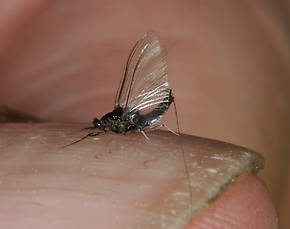 View 3 PicturesI collected these males about 9:30 AM, air temp. about 68 degrees F. The males were flying about 3 ft above the stream flying up and down the stream rather than the typical vertical swarm you see with most mayfly males. The males are black and the females are a green color due to the eggs they are carrying. They do not live very long which is typical for small bodied mayflies. They do not fly during windy conditions. I suspect these are Tricorythodes minutus.
View 3 PicturesI collected these males about 9:30 AM, air temp. about 68 degrees F. The males were flying about 3 ft above the stream flying up and down the stream rather than the typical vertical swarm you see with most mayfly males. The males are black and the females are a green color due to the eggs they are carrying. They do not live very long which is typical for small bodied mayflies. They do not fly during windy conditions. I suspect these are Tricorythodes minutus.
 View 3 PicturesI collected these males about 9:30 AM, air temp. about 68 degrees F. The males were flying about 3 ft above the stream flying up and down the stream rather than the typical vertical swarm you see with most mayfly males. The males are black and the females are a green color due to the eggs they are carrying. They do not live very long which is typical for small bodied mayflies. They do not fly during windy conditions. I suspect these are Tricorythodes minutus.
View 3 PicturesI collected these males about 9:30 AM, air temp. about 68 degrees F. The males were flying about 3 ft above the stream flying up and down the stream rather than the typical vertical swarm you see with most mayfly males. The males are black and the females are a green color due to the eggs they are carrying. They do not live very long which is typical for small bodied mayflies. They do not fly during windy conditions. I suspect these are Tricorythodes minutus.Collected August 12, 2011 from the Touchet River in Washington
Added to Troutnut.com by Bnewell on August 12, 2011
Added to Troutnut.com by Bnewell on August 12, 2011
Driving down the Richardson to Chitina, with a stop at the Gulkana
I had good photo weather for the 7-hour drive from Fairbanks down to Chitina for the dip-netting trip detailed in the August 12th update. I stopped for a few hours at the upper Gulkana River along the way, hoping to catch grayling in a promising new spot I'd found (but not fished) on an earlier trip. That stretch of river is so enchanting one could spend a lifetime on a single mile of it and never want to leave. I was amazed to find no sign of grayling, except for another angler who said the spot fishes well earlier in the summer. I fished behind spawning sockeye salmon and caught only a round whitefish, and was treated to the sight of caribou crossing the river upstream. I think the spawning salmon have something to do with the lack of grayling, no doubt an interesting story I have yet to figure out.
Photos by Troutnut from the Gulkana River, Miscellaneous Alaska, the Copper River, Summit Lake, and the Delta River in Alaska
Top 10 Fly Hatches
Top Gift Shop Designs
Eat mayflies.
Top Insect Specimens
Miscellaneous Sites
Troutnut.com is copyright © 2004-2024 Jason
Neuswanger (email Jason). See my FAQ for information about use of my images.
 privacy policy
privacy policy

